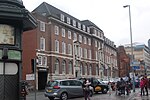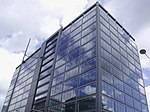West Midlands Police Museum

The 'West Midlands Police Museum is located in a Victorian cell block on Steelhouse Lane, Birmingham, England, which was operational from 1891 until 2016. One of two museums operated by the West Midlands Police, (the other being in Coventry) The Lock-up is open to the public and for school/group visits and special events. Visit the website for more details: https://museum.west-midlands.police.uk. The museum houses comprehensive artifacts and archives of the West Midlands Police and its predecessors dating back to before the formation of Birmingham City Police in 1839, as well as a small collection of paintings, including a portrait of Sir Charles Horton Rafter, the longest-serving Chief Constable of Birmingham. The archives contain many records of police officers who served in the area of the present West Midlands Police and are of particular interest to genealogists.The museum re-opened in April 2022 at the Victorian listed cell block at Steelhouse Lane police station following a heritage lottery-funded refurbishment. .
Excerpt from the Wikipedia article West Midlands Police Museum (License: CC BY-SA 3.0, Authors, Images).West Midlands Police Museum
Steelhouse Lane, Birmingham Digbeth
Geographical coordinates (GPS) Address Nearby Places Show on map
Geographical coordinates (GPS)
| Latitude | Longitude |
|---|---|
| N 52.4842181 ° | E -1.8936986 ° |
Address
Steelhouse Lane
Steelhouse Lane
B4 6BJ Birmingham, Digbeth
England, United Kingdom
Open on Google Maps








